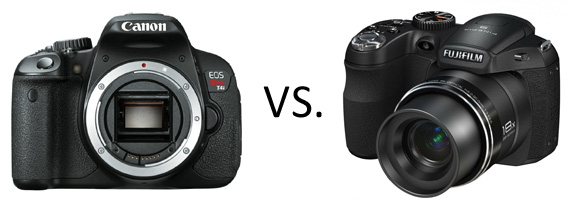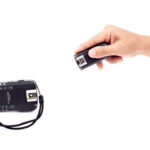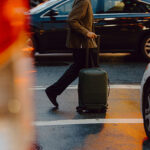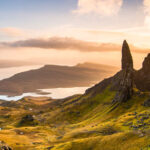Most people will have a point & shoot digital camera somewhere. They’re ideal for carrying around in your pocket or bag. Most will take relatively good pictures, in most situations.
But what about when you want better pictures than your little point & shoot can manage? When you want clearer portraits, or close-ups of something interesting?
Maybe you want a better zoom capability than your little camera is capable of?
There used to be just one option, the SLR camera. But in recent years, we’ve seen the emergence of a new style of camera, the bridge camera. So called, because it bridges the gap between the point & shoot and the SLR, both in capabilities and, normally, price.

DSLR Cameras vs Bridge Cameras
So let’s look at some of the pros and cons of both the DSLR (Digital Single Lens Reflex) and the Bridge.
DSLR Camera
Pros
- Optical sensor is generally better
- Interchangeable lenses
- Better zoom and macro capabilities
Cons
- More expensive
- Need to buy extra lenses
- More to carry around
- Need more knowledge to operate properly
Bridge Camera
Pros
- Less expensive
- No need for extra lenses
- Lighter and easier to carry around
- ‘Auto’ settings easy to start with
Cons
- Zoom and macro capabilities are limited
- Low light settings are generally worse
So, which should you go for?
This will depend on what you are trying to achieve in your photographs.
It also depends on how much money you’re willing or able to spend.
Bridge cameras are a very good way of getting a lot more options without spending too much. If you find that you don’t need the ability to change the settings, they have an “auto” setting, which will turn it back into a point & shoot, but better than most pocket sized ones. If you like being able to tweak the settings, then you have those options, but you will be limited. Not all bridge cameras allow full control.
DSLR cameras, although more expensive and larger and heavier to carry around, offer you the widest options and greatest capabilities. With the range of lenses and flash systems available, you can photograph anything. But don’t expect to be taking great snaps straight out of the box. It can take a long, long time to learn how to use it correctly. Also, you will want to purchase more than the lens that came with your purchase. One thing to remember here, you MUST stick to the same manufacturer when buying lenses. If you have a Canon camera, you need a Canon lens. A Nikon or Fuji lens will not fit!
In summary, if you’re frustrated by your current pocket camera, but not wanting to lug around tons of lenses and stuff, then a bridge would be ideal. If you’re looking to take professional-style photographs, then you need to go for the DSLR.
About the Author
Original article by Canon Camera Guy – http://canoncameraguy.hubpages.com/.
Like This Article?
Don't Miss The Next One!
Join over 100,000 photographers of all experience levels who receive our free photography tips and articles to stay current:






Clearly the author has never tried a Panasonic LUMIX DMC-FZ100 bridge camera. I use mine with an Olympus Flash Gun on the hotshoe. The picture quality even on high zoom video is stunning and fully stabilised. It also offers many manual settings for the enthusiast wanting to experiment. For some reason later FZ models aren’t as good and offer less options except their higher zoom capability and perhaps WiFi.
If you only consider the center third of your sensor then a 400mm DSLR is 1200mm. That is what you are comparing with the 1200mm equivalent. You also can’t get tilt/shift or anything like the lenbaby/lomography lenses on a bridge or pocket camera. Not saying they aren’t amazing… I plan on upgrading my backup camera to one of these super bridge/pocket cameras soon.
I had a p520 nikon for few years,then i changed my mind to get a dslr,i went for d5300 2 mounth ago
But if i really want to say,i really like p520 more than d5300
The only diff i saw for now in pics was in time and lag between taking pics with p520
The quality of images in same pos and same options weren’t that much different
It might be soon to say,maybe i still need to work with d5300 to learn more
This review is outdated already. Bridge cameras for 2015 have been great and outselling DSLRs, more capabilities than ever, so many options for zoom and shutter. My canon SX60sh is the perfect camera for me! I bought it brand new during the holidays and is very cheap but the functionalities are awesome. I don’t think I’ll be buying a DSLR, what with those expensive lenses and difficulty of use.
Limited macro/zoom capabilities? Let’s see your 1200mm DSLR lense.
This article will soon be meaningless. DSLRs will soon go the way SLRs. “State of the art” cameras will soon be a newer generation of bridge cameras. Improved sensors and optics will match dslr technology and interchangeable lenses will go for cheap on eBay. ….Just the reality of technology, sales, and marketing.
I agree with the other posters, zoom capabilities & macro of bridge cameras are much better than with SLR’s, BUT, bridge cameras don’t focus as quick, reaction time from shutter button pressed is longer. Big difference on the SLR is the bigger sensors, giving better image quality, especially in lower light. I ended up with an SLR and a 500mm Sigma lens for birding, I just couldn’t get proper results with the Canon SX40 – yes it gives you huge zoom and about 10fps, but I don’t have any descent photos to show for it.
Not good article, clearly not knowledgeable author.. dSLRs do not need more knowledge to operate. Bridge cameras are not always cheaper. Auto settings make it equally easy to start with in either case. “Zoom and macro capabilities are limited” – really? Let’s see your 1200mm lens on your dSLR.
I have experience with both, DSLR and bridge cameras, and personally, the bridge camera is easier and faster. To me. It could just be the quality of the camera. But, DSLR cameras are amazing, as far as the speed of taking a picture, and the quality of the photo.
If you plan doing something other then point and shoot in sunlight you need a dslr or at least a four third if weight is a probem. But dslrs are so cheap today…. Even extreme good cameras came with one or two lenses… Starting 350 dollar….
I think the author is not very familiar with bridge cameras. He listed as CON the Zoom and Macro capabilities of bridge cams. Most bridge cameras nowadays have zooms not less than 30X. A DSLR lens with focal length of 18-270 has only 15X zoom. Nikon P510 has an equivalent of 1000 mm focal length (42X). To match this length in DSLR terms, you would be lugging around a cannon-of-a-lens. Macro is another specialty of bridge cameras. Fujifilm HS series can focus to as near as 1 cm. Canon SX series lists its focusing distance as 0 cm. The weak attribute of bridge cams is image quality due to its small sensor. The bridge cam with the largest sensor is Fujifilm X-S1 which has 2/3″ sensor size.
Ahh if only there is ever one true answer to any question like this. But there is not. It’s all about what you need, when you need it.
I have a full dSLR kit bag, a bridge camera and a camera I only use out on the street.
If I have a job or a serious studio piece to do I will no doubt turn to my dSLR. More often than not, for travelling light, family and tourist shots, I will take my Fuji X-S1 bridge camera.
One really is as good as the other depending upon what you are asking it to achieve.
If your budget is tight then think hard about what you will be doing with your camera to make the best possible decision. If you can afford it then don’t limit your options.
Whatever you do, your only as good as the camera (& lens) you have with you when the photograph presents itself (and some people take V good pictures with disposables) . Enjoy your shooting!
I bought a bridge camera as I wanted something better than my point and shoot. I soon found that I needed to upgrade to a DSLR as I was missing shot opportunities mainly due to shutter lag. Before buying it I was not aware how important it was to consider shutter lag. By the time my bridge had auto-focused (it did not have manual focus) & locked on then taken the shot after the shutter had been pressed, the subject had moved out of place. I then found that it would take a second or two to save the picture before being ready for the next shot. My DSLR takes the shot as soon as I press the button, it can also take continuous shots & be saving them at the same time. I have the facility to put on a different lens if I want to be more creative & I have a flash hot shoe which my bridge did not have (more recent bridge cameras have the hot shoe but some still do not). I have also learned a lot more about light & shot composition since buying my DSLR & trying out the manual modes which give me more control of the shot.